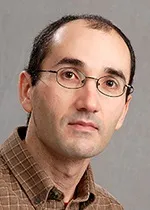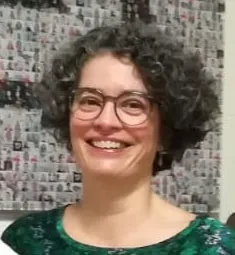Project overview
There are several types of intracranial haemorrhage, depending on where in the brain the haemorrhage occurs. In subarachnoid haemorrhage, there is bleeding in the subarachnoid space, over the surface of the brain. Up to one third of patients die instantly with this type of bleed, and most survivors have neurological and/or cognitive deficits. The underlying mechanisms are a subject of intense study. When the blood clot on the surface of the brain breaks down, the red blood cells release haemoglobin, the red pigment in blood. Haemoglobin is toxic and damages nerve cells when outside red blood cells, since it is a potent oxidizing agent. We have found that there is significant iron deposition in the brain, as demonstrated by histochemistry and quantitative susceptibility-weighted magnetic resonance imaging, up to six months after subarachnoid haemorrhage, suggesting that haemoglobin had penetrated the cortex. The amount of iron (and therefore haemoglobin penetration) was in turn related to cognitive dysfunction.
Luckily the body has developed a system to clear haemoglobin when it is released from red blood cells, which is based on haptoglobin, a protein in blood which binds haemoglobin and neutralizes its toxicity. However we found that the brain has very little of this protein. Since patients with subarachnoid haemorrhage and large blood clots have an external ventricular drain as part of their clinical care, this protein can be delivered to the brain via this drain, if one proves it can really help. In this project, we collaborate with our industrial partner, Bio Products Laboratory Limited, in order to test whether haptoglobin can still bind to haemoglobin in human cerebrospinal fluid after subarachnoid haemorrhage and to establish the therapeutic window for such treatment. We also study haptoglobin genotype and how this is related to clinical outcome after subarachnoid haemorrhage in humans.
Luckily the body has developed a system to clear haemoglobin when it is released from red blood cells, which is based on haptoglobin, a protein in blood which binds haemoglobin and neutralizes its toxicity. However we found that the brain has very little of this protein. Since patients with subarachnoid haemorrhage and large blood clots have an external ventricular drain as part of their clinical care, this protein can be delivered to the brain via this drain, if one proves it can really help. In this project, we collaborate with our industrial partner, Bio Products Laboratory Limited, in order to test whether haptoglobin can still bind to haemoglobin in human cerebrospinal fluid after subarachnoid haemorrhage and to establish the therapeutic window for such treatment. We also study haptoglobin genotype and how this is related to clinical outcome after subarachnoid haemorrhage in humans.
Staff
Lead researchers
Other researchers
Research outputs
Patrick Garland, Matthew Morton, Ardalan Zolnourian, Andrew Durnford, Benjamin Gaastra, Jamie Toombs, Amanda J. Heslegrave, John More, Henrik Zetterberg, Diederik O. Bulters & Ian Galea,
2021, Brain, 144(3), 761–768
Type: article
Isabel C. Hostettler, Matthew J. Morton, Gareth Ambler, Nabila Kazmi, Tom R. Gaunt, Duncan Wilson, Clare Shakeshaft, Hans R Jäger, Hannah Cohen, Tarek Yousry, Rustam Al-Shahi Salman, Gregory Y.H. Lip, Martin M. Brown, Keith W. Muir, Henry Houlden, Diederik Bulters, Ian Galea & David J. Werring,
2020, Journal of Neurology, Neurosurgery and Psychiatry, 91(3), 298-304
Type: article
Matthew J. Morton, Isabel C Hostettler, Nabila Kazmi, Varinder Alg, Stephen Bonner, Martin M Brown, A. Durnford, Benjamin Gaastra, Patrick Garland, Joan Grieve, Neil Kitchen, Daniel Walsh, Ardalan Zolnourian, Henry Houlden, Tom R. Gaunt, Diederik Bulters, David J. Werring & Ian Galea,
2020, Journal of Neurology Neurosurgery and Psychiatry, 1-9
Type: article
Patrick Garland, Matthew J. Morton, Haskins William, Ardalan Zolnourian, Andrew Durnford, Benjamin Gaastra, Jamie Toombs, Amanda J. Heslegrave, John More, Azubuike I. Okemefuna, Jessica Teeling, Jonas H. Graversen, Henrik Zetterberg, Søren Kragh Moestrup, Diederik Bulters & Ian Galea,
2020, Brain Communications, 2(1)
Type: article
Nabila Kazmi, Yoshiro Koda, Ndeye Coumba Ndiaye, Sophie Visvikis-Siest, Matthew Morton, Tom R. Gaunt & Ian Galea,
2019, Clinica Chimica Acta, 494, 138-142
Type: article
Diederik Bulters, Ben Gaastra, Ardalan Zolnourian, Sheila Alexander, Dianxu Ren, Spiros L. Blackburn, Mark Borsody, Sylvain Doré, James Galea, Koji Iihara, Paul Nyquist & Ian Galea,
2018, Nature Reviews Neurology, 14(7), 416-432
Type: article

